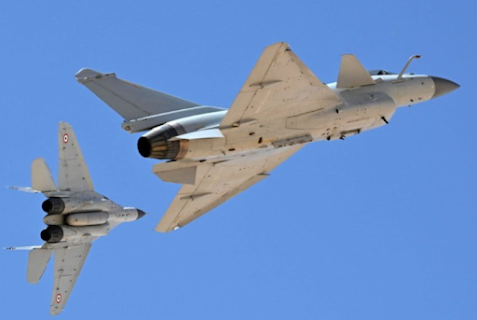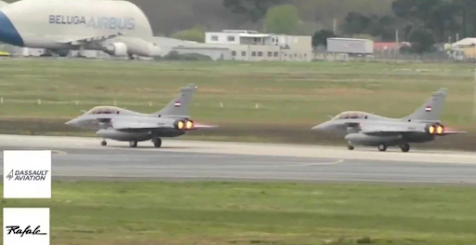Black Hawk helicopters can now fly independently.Black Hawk helicopters can now fly without pilots using the new Matrix artificial intelligence technology.
The aviation era is entering a new phase marked by breakthroughs in artificial intelligence and autonomy. One of the most significant recent achievements has been the demonstration of the ability of the legendary American UH-60 Black Hawk helicopters to fly without pilots on board. This is not just another step in the development of unmanned systems.; This is a transformation of one of the most recognizable and widely used rotorcraft in the world, opening up completely new horizons for military and potentially civilian operations. At the heart of this revolution is an advanced artificial intelligence technology known as Matrix, developed by Sikorsky, a subsidiary of Lockheed Martin.The UH-60 Black Hawk helicopter is itself an icon of military aviation. Being in service with the US Army and many other countries since the late 1970s, it has proven itself to be an incredibly reliable, versatile and hardy machine. The Black Hawks have participated in countless operations around the world, performing a wide range of tasks, from transporting troops and supplies to medical evacuation, search and rescue missions, and fire support. Its rugged design, excellent flight characteristics, and ability to operate in the harshest environments have made it an ideal platform for integrating advanced autonomous systems. Choosing Black Hawk for such tests highlights the desire to modernize the existing, time-tested fleet of vehicles, rather than create completely new platforms from scratch, which significantly accelerates and reduces the cost of innovation.A number of factors are driving the development of autonomous capabilities for helicopters like the Black Hawk. First of all, it is the desire to improve flight safety and reduce risks for the crews. Flying in difficult weather conditions, at night, in conditions of poor visibility (dust, smoke, fog) or in active combat zones is fraught with great danger for pilots. An autonomous system capable of taking over control or even completely completing a mission without a human on board can dramatically change the situation, allowing you to perform tasks that were previously considered too risky. In addition, automation reduces the burden on pilots during long or routine flights, allowing them to focus on more important aspects of the mission, such as tactical planning or weapon system management. This also opens up the possibility of reducing the number of crew, which can be crucial in the face of a shortage of qualified pilots.Sikorsky's Matrix technology is not just an advanced autopilot, but a full-fledged artificial intelligence system designed for flight control. It integrates a set of hardware and software tools. The hardware includes a variety of sensors (lidars, visible and infrared cameras, radars, inertial navigation systems, GPS) and powerful on-board computers. The software is complex algorithms that process data from sensors in real time, create a detailed three–dimensional picture of the environment, plot a safe flight route, taking into account the terrain, obstacles and dynamically changing conditions, and generate commands for helicopter control systems. Matrix is designed as an "Optionally Piloted Vehicle" (OPV) system. This means that the helicopter can fly both under pilot control and completely autonomously, or in a mixed mode when the AI helps the crew. Pilots can take control at any time or transfer it to the system. This flexibility is a key advantage, allowing you to adapt the automation level to your specific mission and conditions.
The development and testing of autonomous Black Hawks has been underway for several years, often in collaboration with the US Defense Advanced Research Projects Agency (DARPA), in particular, under the ALIAS (Aircrew Laboratory In-System Automation System) program.
ALIAS's goal was to create a universal automation suite that could be relatively easily integrated into various existing aircraft, both airplanes and helicopters, to reduce crew workload and improve safety. Sikorsky used a specially modified S-70 helicopter (the civilian version of the Black Hawk), known as the SARA (Sikorsky Autonomy Research Aircraft), as a flying laboratory for testing Matrix algorithms. These efforts culminated in historic flights, when the UH-60 Black Hawk, equipped with the Matrix system, took to the air for the first time and performed a series of maneuvers without a single person on board. These demonstration flights included autonomous takeoff, flight along a preset route, flying around simulated obstacles, selecting and landing at an unplanned point, as well as autonomous landing. The capabilities of performing typical missions, such as cargo delivery on an external sling and even flight simulation in a degraded visual environment where human vision would be severely limited, were demonstrated. The system has shown the ability to analyze the surrounding space, identify safe landing zones and perform complex maneuvers with high accuracy comparable to the actions of an experienced pilot.The operating principle of Matrix is based on merging data from multiple sensors. Lidars create an accurate map of terrain and obstacles, cameras provide visual recognition of objects, radars help in conditions of poor visibility, and inertial and satellite systems are responsible for navigation. Artificial intelligence analyzes all this information, predicts possible developments (for example, the appearance of other aircraft) and makes control decisions – changes course, altitude, speed, controls the pitch of the propellers. The system is capable of not only following a set flight plan, but also dynamically responding to unforeseen circumstances, such as a sudden obstacle or a change in weather conditions, independently choosing the safest and most effective way to continue the mission.
The introduction of such technologies opens up completely new tactical opportunities for the military. Autonomous Black Hawks can be used to supply advanced units in dangerous areas without risking the crews. They can carry out reconnaissance missions or electronic warfare missions deep behind enemy lines. Potentially, such helicopters can be used for medical evacuation of the wounded from the battlefield, where sending a manned vehicle would be suicidal. The ability to work around the clock without restrictions related to pilot fatigue significantly increases operational readiness. In the future, one operator on the ground will be able to control several autonomous helicopters acting as a single "swarm" to perform complex coordinated tasks. This may lead to fundamental changes in the structure of army aviation and tactics of its use.Despite impressive successes, the path to widespread adoption of fully autonomous helicopters has not yet been completed. There are a number of difficult tasks to be solved. It is necessary to develop and approve strict certification procedures for such systems, ensuring their reliability and safety at a level not inferior to manned aviation. Cybersecurity is a critical issue – protecting management systems from hacking or hostile interference. Further improvement of AI algorithms is required, especially in terms of decision-making in non-standard, unforeseen situations that are difficult to model in advance. The psychological aspect is equally important – the formation of trust in autonomous systems among both the military themselves and society as a whole. It is necessary to define the ethical framework for the use of such technologies, especially if we are talking about armed options. The integration of autonomous vehicles into the existing air traffic control system and interaction with manned vehicles will also require new protocols and standards.
Nevertheless, the first successful Black Hawk flights without pilots clearly show the direction of development of military (and possibly civilian) helicopter aviation. Matrix technology and similar systems promise to make flying safer, more efficient, and more accessible for the most demanding and dangerous tasks, marking a new era in the history of rotorcraft. Combining the time-tested Black Hawk platform with advanced artificial intelligence creates a synergy that will shape the future of vertical takeoff and landing for decades to come.

































.jpg)
